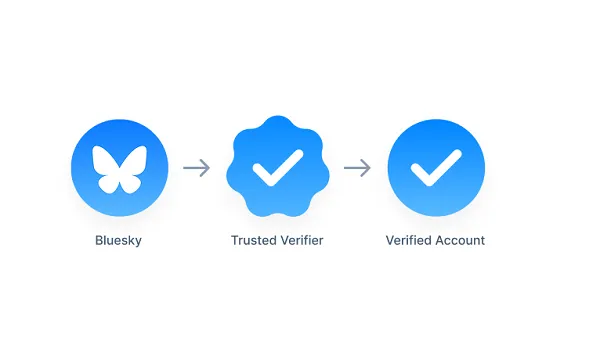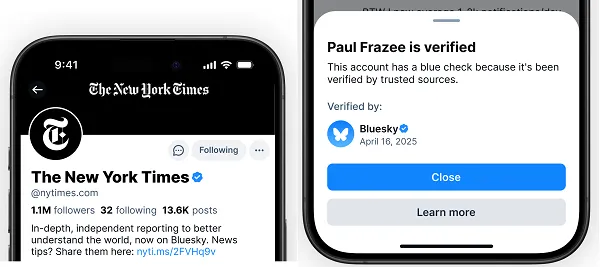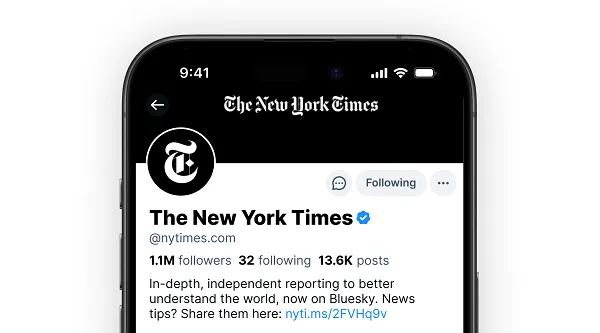To streamline verification and avoid overwhelming its internal team, Bluesky is delegating verification authority to a network of trusted providers. These approved entities will be able to issue blue checkmarks to users themselves, giving the platform a decentralized approach to trust and identity—something that aligns with Bluesky’s broader goal of building an open, federated social web.
Instead of centralizing control like Twitter once did—or monetizing it, like X does now—Bluesky is letting verified organizations and community groups take on the role, allowing for scalable, context-aware verification that could grow organically alongside the network.
It’s a practical step for growth, and another way Bluesky is trying to maintain credibility while embracing decentralization.

Bluesky has clarified how its new verification system works, leaning into a more transparent and distributed model. According to the platform:
“We’re also enabling trusted verifiers: organizations that can directly issue blue checks. For example, the New York Times can now issue blue checks to its journalists directly in the app. Bluesky’s moderation team reviews each verification to ensure authenticity.”
This means users won’t need to rely solely on Bluesky staff for verification. Instead, recognized institutions—like media outlets, universities, or other vetted organizations—can verify their own members. It’s a decentralized method designed to scale responsibly without compromising trust.
To keep things clear, users can tap on any verification badge to see how it was granted, with a short explanation of the verification process. It’s a simple way to add context and avoid confusion, especially as more third-party verifiers come online.

Will it work?
Honestly, it’s hard to see this scaling smoothly.
The idea of letting trusted organizations issue their own blue ticks sounds efficient in theory—but in practice, it opens the door to all kinds of inconsistencies and overreach. Even with Bluesky’s moderation team reviewing each verification, the sheer volume of approvals could quickly become unmanageable, especially as more entities come onboard.
The problem is interpretation. While the intent seems to be verifying public-facing individuals—like journalists, researchers, or company spokespeople—some organizations are inevitably going to stretch the definition. Once one team starts handing out badges to everyone from interns to the facilities manager, others will follow, and suddenly the blue tick means nothing.
Then there’s ongoing maintenance: what happens when people leave a company? Who revokes the checkmark? Is it on Bluesky’s moderation team, or the organization? What if no one bothers?
These are the kinds of messy, admin-heavy issues that centralized systems try to avoid, and while Bluesky’s approach fits with its decentralized ethos, it may struggle with real-world execution. Rolling it out slowly is the right move—but unless guardrails are crystal clear (and enforced), the whole thing risks turning into another messy badge system that users stop trusting altogether.






Leave a Reply